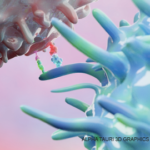
Each year, I spend one month as the attending on the general medicine service. While I am active clinically as a rheumatologist, it has been more than 30 years since I was a house officer and served on the front lines to treat pancreatitis, cirrhosis, or lung cancer. I may be a Duke Marine, but when it comes to inpatient work, my status is more appropriately inactive reserve.
I always have a great time as attending; any anxiety about clinical rustiness is far outweighed by the excitement and satisfaction that comes from caring for the very sick. I also relish team camaraderie. The practice of medicine always involves a team, but the ward team is unique. It unites novices and experts, students and teachers, young and old. While the ward team members are the age of my children, they will as likely teach me as I will them.
The current pace of medical advance is fast if not frantic and, in the year that will pass between my stints as ward attending, there will be a torrent of new drugs, imaging studies, and treatment approaches. There is no way that anyone can keep up with the pace of innovation and I long ago learned that it is better to admit ignorance than to bluff your way through rounds.
This year on rounds, I was blindsided by a term I never heard before. The term is “sniff.”
The Mysterious Sniff
I learned about “sniff” on my first day attending as I reviewed patients with the two admitting teams. We were sitting in a crowded and messy workroom—similar to the one I toiled in as an intern except it has five flat-screen computers and an espresso machine. Even working just 80 hours a week, house officers apparently need caffeine to keep them going.
Ward teams are usually named by color; let’s call this group Orange 1. It was a typical team—a quiet and earnest medical student, an overworked but cheerful intern, and a junior assistant resident with the swagger that the rite of internship can bring. As I talked with Orange 1, the Orange 2 group worked at their computers, the air filled with a barrage of clicking as they banged at keyboards with blazing speed.
The resident on Orange 1 was “running” the patient list, reducing each person to two or three sentences so that I could make a recommendation or erudite comment. When we got to a patient we can call Mr. Jones, the resident issued a staccato summary: “72-year-old man with recent stroke, MI, and GI bleed. We are trying to get him a ‘sniff.’ ”


